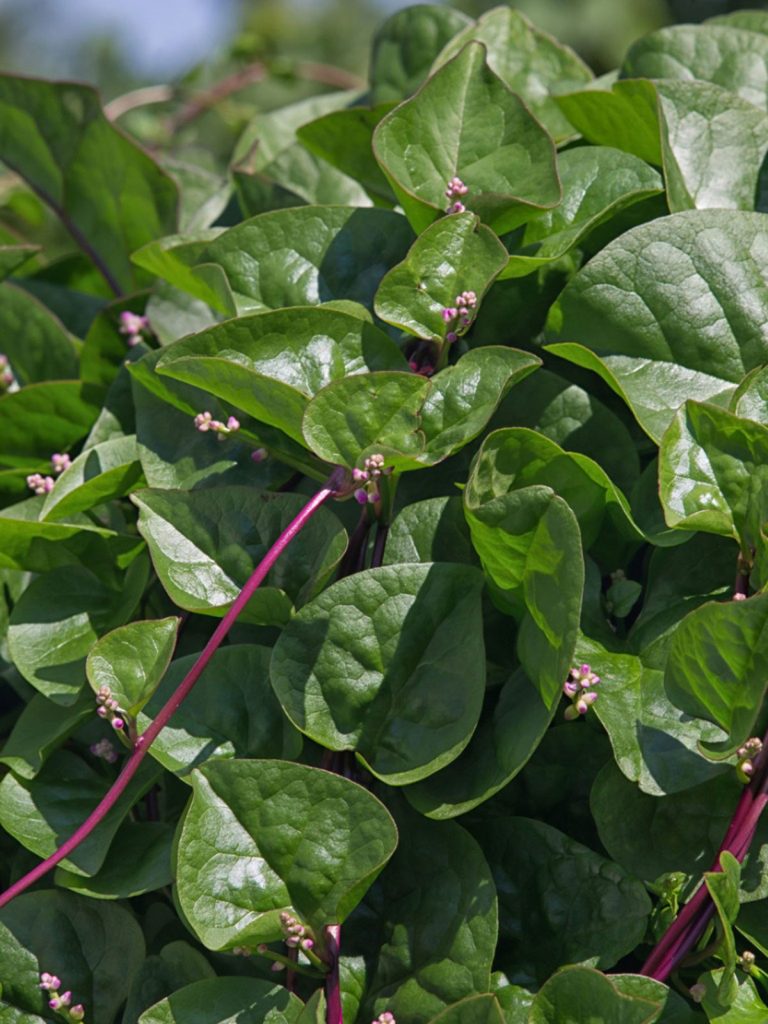
Table of Contents
Health Benefits of Malabar Spinach
A deficiency in folate has been linked to cancer, including breast, cervical, lung, and brain. Consuming a diet rich in folate has also been found to protect against certain types of cancer. However, natural forms of vitamins and minerals differ from those that are found in pharmaceutical products. A 100-gram serving of fresh greens contains 102 mg of vitamin C, a powerful antioxidant that helps develop resistance to infectious agents and scavenger of oxygen-free radicals. Yes these are the Health Benefits of Malabar Spinach to start with.
The health benefits of Malabar spinach are extensive, ranging from its excellent taste to its resistance to common diseases.
Nutritional values of Malabar Spinach
A serving of Malabar Spinach contains 10 calories. It contains 50 grams of Vitamin B9, 0.65 mg of iron, 55 mg of calcium, and 0.049 mg of copper. It is rich in other protein and mineral nutrients. It is considered to be a very healthy vegetable. It is also high in fiber. Hence, it can be enjoyed anytime and with any type of food. The nutritional values of Malabar Spinach are very high.
The leaves of Malabar Spinach are rich in antioxidants, which protects the body from the harmful effects of free radicals. Free radicals damage skin cells and lead to premature ageing. These antioxidants help prevent skin damage. So, eating a serving of Malabar Spinach daily can provide numerous benefits. Moreover, it has a very low calorie content. It is also rich in soluble fiber and protein.
Medicinal benefits of Malabar Spinach
In addition to its delicious taste, Malabar Spinach is loaded with nutritional value. Each 100 grams of cooked spinach contains 2.8% protein, 0.4% fat, and 4.2% carbohydrates. It also contains 200 mg of calcium, 35 mg of phosphorus, 10 mg of iron, and various other nutrients. The leaves are excellent sources of Vitamin A, C, and dietary fibre. They also contain phytates, which limit the bioavailability of several minerals.
The highest amount of folate found in Malabar spinach helps lower homocysteine levels in the blood. High homocysteine levels are associated with heart attacks, strokes, and other serious health problems. Folate-rich foods help the body metabolize minerals, and have antioxidant properties. Additionally, Malabar spinach contains high amounts of vitamin A, which enhances vision, boosts immunity, maintains healthy mucus membranes, and lowers the risk of depression.
Morphology of Malabar spinach
The morphology of Malabar spinach is quite similar to that of its edible cousin. When stripped of its leaves, the plant produces foliage, and the young shoot tips are edible. Malabar spinach is known to be a tasty vegetable, and the leaves are the preferred part of the plant. Although the fruit itself is not edible, it is used as a food colorant and is edible in limited amounts. It is native to tropical regions, but is not considered a good choice for cold climates.
Although this plant has a low susceptibility to most diseases, it is vulnerable to snails, including fungal leaf spots and pratylenchus penetrans, which reduce plant growth. However, frequent monitoring of this plant’s health is crucial in order to determine the most effective pest control strategy.
In the home garden, Malabar spinach is a popular choice due to its high resistance to common diseases and pests. It can be planted on a sturdy trellis or a fence. The plants also grow well in shade. They are not as demanding as their edible cousins, but do not require too much sunlight. In the field, Malabar spinach grows well in sandy soil and tolerates moderate rainfall.
The growing conditions of Malabar spinach are ideal for a warm climate, as it prefers a constant moisture. Without proper moisture, the leaves will taste bitter and may even bloom. Ideally, Malabar spinach should receive 80 to 100 inches of rain per year, although it can tolerate a range from thirty to 160 inches. For optimum growth, plant Malabar spinach in partial shade, and provide adequate water on a regular basis. Applying N fertilizer at a rate of one to two pounds per acre is the most effective way to maintain quality of leaves.
Precautions while using Malabar Spinach
Growing Malabar spinach is easy. You can purchase seedlings or take cuttings. To start a new plant, simply place the stems in a pot of soil. Once the stems have roots, they will grow. The leaves are loaded with nutrients and can be consumed raw, boiled, or steamed. It can also be used in a wide variety of dishes, but it will lose its red color after cooking.
This leafy vegetable is rich in vitamin A, which is a vital antioxidant for the body. Antioxidants are important because they protect our cells from free radicals, which damage our skin and cause premature ageing. In fact, one hundred grams of cooked Malabar spinach contains 5.7 milligrams of vitamin A, or 39% of our daily recommended value. However, be sure to follow label directions when using Malabar spinach.
